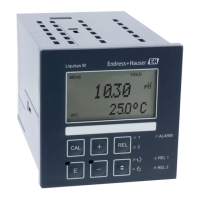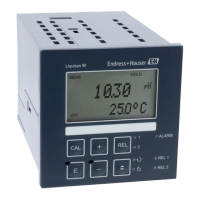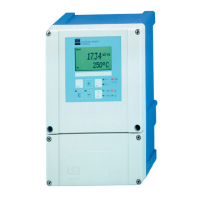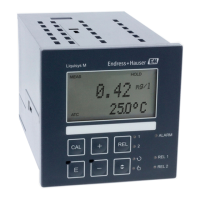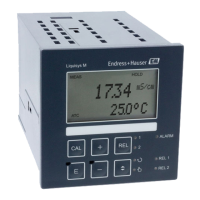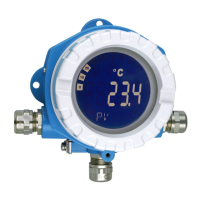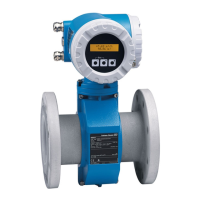Wiring Deltabar M 4...20 mA HART
8 Endress+Hauser
3.2 Connecting the measuring unit
3.2.1 Supply voltage
!
Note!
• When using the measuring device in hazardous areas, installation must comply with the
corresponding national standards and regulations and the Safety Instructions or Installation or
Control Drawings.
• All explosion protection data are given in separate documentation which is available upon
request. The Ex documentation is supplied as standard with all devices approved for use in
explosion hazardous areas.
Taking 4 to 20 mA test signal
A 4 to 20 mA test signal may be measured via the test terminals without interrupting the
measurement.
To keep the corresponding measured error below 0.1%, the current measuring device should
exhibit an internal resistance of < 0.7 Ω.
3.2.2 Cable specification
• Endress+Hauser recommends using twisted, shielded two-wire cables.
• Terminals for wire cross-sections 0.5 to 2.5 mm
2
(20 to 14 AWG)
• Cable outer diameter: 5 to 9 mm (0.2 to 0.35 in) depends on the used cable gland (see
technical information)
3.2.3 Shielding/potential equalization
• You achieve optimum shielding against disturbances if the shielding is connected on both
sides (in the cabinet and on the device). If potential equalization currents are expected in the
plant, only ground shielding on one side, preferably at the transmitter.
• When using in hazardous areas, you must observe the applicable regulations.
Separate Ex documentation with additional technical data and instructions is included with
all Ex systems as standard.
3.3 Potential equalization
Hazardous area applications: Connect all devices to the local potential equalization.
Observe the applicable regulations.
Electronic version
4 to 20 mA HART,
for non-hazardous areas
11.5 to 45 V DC
(versions with plug-in connector 35 V DC)

